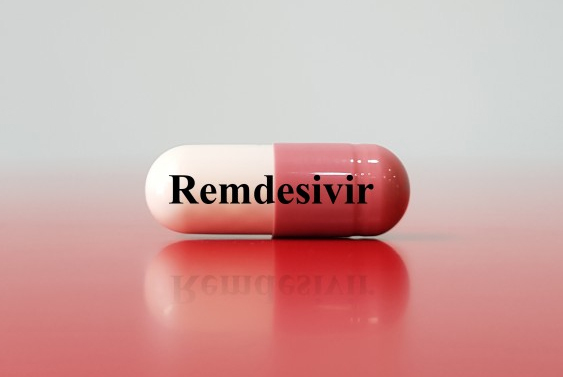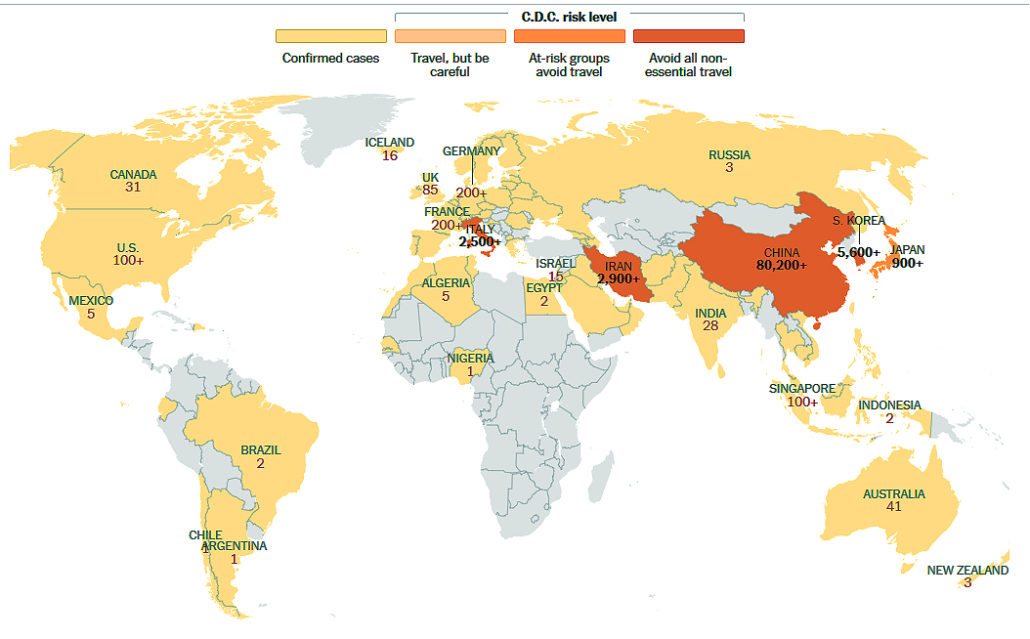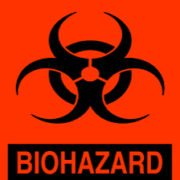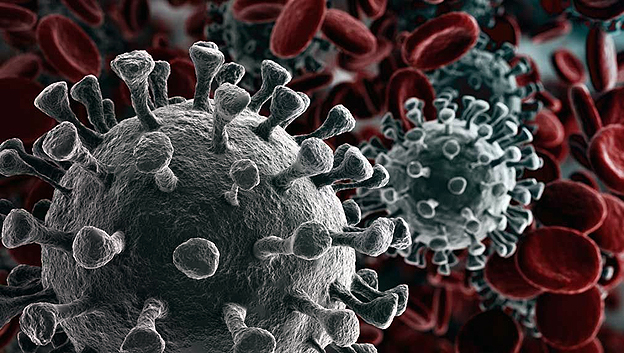Coronavirus, COVID -19 News Archive
BREAKING NEWS
Friday, April 17th, 2020
STAT news reported that severely ill coronavirus patients were responding well to remdesivir, a Gilead Sciences drug, at a Chicago hospital. The trial involved only 125 people and the preliminary results were not peer reviewed, but it was welcome news, and a possible beginning to a virus vaccine based on science and not politics.

- Previously, Remdesivir was given to the first known U.S. coronavirus patient: a man in Washington State who had recently returned from the outbreak’s epicenter in Wuhan, China. And he has made a good recovery.
- But that patient is, of course, only a single person, and a larger sample size will be needed to determine the drug’s efficacy.
- Two trials of Remdesivir are currently underway in China: one for severe cases of COVID-19 and the other for mild or moderate cases. Results for both trials are expected in April.
- Another clinical trial is planned in the U.S., and it will be run by the University of Nebraska Medical Center and the National Institute of Allergy and Infectious Diseases. That trial will take months to be conducted and at up to 50 sites around the world, testing Remdesivir against a placebo.
- Remdesivir has been shown to be effective against many other viruses, and some experts are optimistic that it—or similar compounds—may work for the pathogen responsible for COVID-19.
previously published… March 13th, 2020
UNITED STATES DECLARES NATIONAL EMERGENCY
Coronavirus expert and Federal government spokesman, Dr. Anthony Fauci [video] says:
It’s certainly going to get worse before it gets better
Crisis will last for at least several weeks and possibly 2 months or more
- No vaccine or direct treatment currently exists.
- U.S. Federal Response — In a stark contrast to many other industrialized nations, the United States preparedness for COVID-19, and testing, has been late, incompetent, incomplete, and only within the last few days has the Virus threat been taken seriously by the Trump administration, in spite of the Virus’ health threat to United States, since December 2019.
- National and states response to COVID-19 have been hobbled by previous health system cuts from the Trump administration in pandemic preparedness, science, and expert staffing at key levels of the Federal agencies responsible for pandemic preparedness: CDC, DoH, Homeland Security, DoD, and other key Federal agencies — a Federal response infrastructure was established after 9/11, but pandemic preparedness and response capabilities that were enhanced during the previous Obama administration, have since been mostly dismantled during Trump’s tenure as President.
- One of the main concerns about caring for vulnerable populations amid coronavirus, in comparison to the flu, is that there are no vaccines to fight the new virus, and no drugs to treat those who become infected. Most epidemiologists agree that an effective and safe vaccine is probably a year or more away, despite President Trump’s claims that he has heard that something could arrive sooner.
- Present treatment for Covid-19 patients mainly consists of providing fluids, giving medicine to alleviate fever and supplying supplemental oxygen in severe cases, according to a Harvard Health report.
- Hospitals may soon be overwhelmed with COVID-19 patients, ill prepared for what’s coming…
- As this pandemic grows in the numbers, verified cases and the number of corresponding hospitalizations grow. The CDC estimates there are only 1 million hospital beds in the United States, and 70% of those beds are already occupied. Ventilators, essential to hospital treatment of those patients seriously ill from the coronavirus is estimated at only 65,000 units nationwide.
- More than 1 million of the most vulnerable people to the virus in the United States live in nursing homes, and more than 800,000 people call residential care communities home, according to the CDC.
- Just last month, Hawaii was bracing for 50,000 to 70,000 cases of flu this year, already complicating preparedness for coronavirus (COVID-19). Hawaii Now reported in late February that the flu was running rampant at Hawaii health care facilities, according to state officials. A handful of hospitals diverted ambulances on at least one day last week because they were overwhelmed beyond capacity.
- The expected surge in influenza cases and hospitalizations statewide is complicated by the near simultaneous arrival of COVID-19 in Hawaii.
President Trump’s speech to the nation – March 11th, 2020
- President Trump’s speech to the nation last night was a belated response to a global crisis. His speech only highlighted an administration engaged in an absence of governance, problem-denial, and misleading statements, and provided little reassurance to the nation from the president that his “crisis on autopilot” policy was working, and will somehow fix itself in time.
- The 10 minute speech to nation at times sounded more like a rambling campaign speech rather than a assuring statement to nation … we have your back. Trump mostly highlighted his accomplishments, while presenting a reactive and mostly economic-focused policy to COVID-19, often without reason or factual justification.
- Trump’s speech highlighted plans for a European travel ban, except for the UK which already has a higher rate of reported COVID-19 cases than 14 other European nations. Vague statements about ramping up national testing for COVID-19 offered little reassurance to an uneasy nation, nor did a proposed temporary tax holiday for certain individuals, companies and industrial sectors of the economy.
- Dr. Joshua Sharfstein, a vice dean at Johns Hopkins Bloomberg School of Public Health and author of “The Public Health Crisis Survival Guide,” said in response to Trump’s statements re COVID-19: “One of the huge lessons is: Don’t politicize the communications. You really need credible communicators who people believe.”
- Joe Biden’s COVID-19 response plan for the nation, counters Trump – March 12th
- Joe Biden, former vice president and candidate for president, held a news conference today from the Hotel du Pont in Wilmington, Del., addressing the challenges the country faces, and his ideas for managing the coronavirus outbreak. Biden drew sharp contrasts with Trump, a day after the president addressed the nation from the Oval Office, establishing a preview of what Mr. Biden hopes will be a general election match-up.
- “Unfortunately, this virus laid bare the severe shortcomings of the current administration,” Mr. Biden said, “Public fears are being compounded by pervasive lack of trust in this president fueled by an adversarial relationship with the truth that he continues to have.”
- “No president can promise to prevent future outbreaks,” he said. “But I can promise you this. When I’m president, we will be better prepared, respond better and recover better. We’ll lead with science. We’ll listen to the experts. We’ll heed their advice. And we’ll build American leadership and rebuild it to rally the world to meet the global threats.”
- “In the difficult days ahead, I know that this country will summon the spirit, the empathy, the decency and the unity needed because in times of crisis, the American people always, always stand as one if told the truth,” he said. “We’ll meet this challenge together. I’m confident of it. But we have to move, and move now.”
- In his remarks, Biden plan for combating the virus, includes proposals calling for rapidly and vastly expanding national testing for the virus — and tests, he said, should be available at no charge, with the nation moving aggressively to boost hospital capacity and supporting an accelerated push for a vaccine…
- Bernie Sanders’s COVID-19 response plan for the nation, counters Trump – March 12th
- Bernie Sanders, also today, provided his own plan for addressing the federal response to the coronavirus outbreak and the steps needed to combat the disease.
- Senator Sanders called for unity and on the president to declare a national emergency.
- Sanders said that we (the nation) must face the truth that the number of US casualties from virus may exceed that of World War Two.
- “If there was ever a time that we were all in this together, the time is now, and must address the virus threat in a bi-partisan effort, led by science and medical experts, not politicians, …if there ever was a time for transparency in government, it is now.”
- “Unfortunately, we have an administration that is largely incompetent and that has endangered many Americans…”
- Sanders speech excerpt: https://nyti.ms/2IJcFEs
- Potential fiscal impacts on Hawaii of COVID-19
- We are just beginning to understand both the potential fiscal and health impacts of COVID-19 on Hawaii.
- Visitor fears over the coronavirus (COVID-19) could mean a $300 million revenue loss to Hawaii this year. The state’s tourism sector is also projected to decline by 10%, resulting in nearly 6,000 job losses, according to an University of Hawaii Economic Research Organization (UERO) released this week.
- Separately, the state’s Council on Revenues projects the state should expect no revenue growth in state taxes in fiscal year 2021, which begins this July 1. They also lowered the projection for the last three months of this fiscal year by 0.3%, or about $22 million.
- State lawmakers appear unaware or unconcerned as to the evolving economic impact to the state’s budget as they pass a series of spending packages, including over $70 million worth of tax benefits for lower income workers, and another $200 million for developing affordable housing in West Oahu. State economists expect tax collections to rebound by 2022 and to coincide with a projected (unknown) statewide economic recovery by the end of 2021.
— previously published from March 3rd, 2020 — Cororavirus World Infection Map

- As of March 6th, the total number of documented coronavirus cases worldwide has topped 100,000 worldwide, with more than 3,400 deaths attributed to the virus. New coronavirus cases have been trending higher, with the vast majority reported outside of China. The World Health Organization previous stated on Tuesday, the global case fatality rate is now 3.4 percent.
- Confirmed U.S. Covid-19 cases have climbed to at least 233. Last week, the U.S. suffered its first two (NY Times report, 3-3-20). As of March 6th, the number has since grown to 14 confirmed U.S. deaths directly attributed to the virus
- Gov. David Ige declared a state of emergency Wednesday (March 4th) following the disclosure that a cruise ship that carried California’s first coronavirus fatality visited the four main Hawaiian islands last week. While Hawaii still has no confirmed cases, state health officials are monitoring developments involving the ship that stopped on Oahu, Maui, Kauai and the Big Island with passengers who may have been previously exposed to the new illness, known as COVID-19.
- The declaration allows Hawaii to use funds to act quickly in containing the spread of the virus when an outbreak occurs in the islands. The measure allows for “funding flexibility” to buy supplies and equipment and gives the governor authority to suspend any laws that may impede emergency functions.
- Racing to confront a growing public health threat, the Democratically-controlled House of Representatives resoundingly approved $8.3 billion in emergency aid on Wednesday to combat the coronavirus, just hours after congressional leaders from both parties reached a deal on the funding.
- The bipartisan package, which includes nearly $7.8 billion for agencies dealing with the virus and came together after days of intensive negotiations, and is substantially larger than what the White House proposed in late February. It also authorizes roughly $500 million to allow Medicare providers to administer telehealth services so that more elderly patients, who are at greater risk from the virus, can receive care at home.
- The coronavirus will have a greater effect on Hawaii’s economy than initially predicted, with tourism spending expected to decline by 10% this year, according to a new report by University of Hawaii economists.
- That equates to an estimated $1.7 billion, based on the 2019 figures for visitor spending.
- The report, released Tuesday by the University of Hawaii Economic Research Organization, is the first major economic research on the local economy produced since the virus’ widening economic effects have come into focus.
- WHAT YOU NEED TO KNOW ABOUT COVID-19
- No vaccine, cure, or direct treatment currently exists to address COVID-19…
- What are the COVID-19 symptoms to look out for?
- Symptoms of this infection include fever, cough and difficulty breathing or shortness of breath. The illness causes lung lesions and pneumonia. But milder cases may resemble the flu or a bad cold, making detection difficult. Patients also may exhibit other symptoms, such as gastrointestinal problems or diarrhea.
- Current estimates suggest that symptoms may appear in as few as two days or as many as 14 days after exposure to the virus.
- How does COVID-19 compare to the flu?
- While the symptoms are similar, the coronavirus seems to be more deadly than the flu — so far — and more contagious. Early estimates of the coronavirus death rate from Wuhan, China, the epicenter of the outbreak, have been around 2 percent, while the seasonal flu, on average, kills about 0.1 percent of people who become infected.
- Viral particles are the transmission vehicle of the coronavirus and must travel within mucus or saliva — and they must enter through eyes, nose or mouth to become infected. While the coronavirus can last on surfaces like tray tables, touch screens, door handles and faucets — one study found that other coronaviruses, like SARS and MERS stay on metal, glass and plastic for up to nine days — a disinfectant on a hard surface, or soap while washing your hands, will kill the virus. However, most people tend to touch their faces more often than they realize. Doing so after touching a surface where droplets from when someone sneezed or coughed can lead to the virus being passed on.
- In the new study, researchers analyzed several dozen previously published papers on human coronaviruses to get a better idea of how long they can survive outside of the body. The authors found that these coronaviruses can linger on surfaces for over a week but that some of them don’t remain active for as long at temperatures higher than 86 degrees Fahrenheit, and can also be effectively wiped away by household disinfectants.
- The Centers for Disease Control and Prevention announced changes that will significantly expand coronavirus tests in the coming days. That will likely uncover many U.S. Covid-19 cases.
- Will Technology or Common Sense Saves Us – perhaps both
- Beginning about half a million years ago, the first human beings emerged in Africa, and eventually migrated around the rest of the world in search of game and other sources of food.
- About 11,000 years ago, certain human beings developed agriculture—a major milestone in human history, and which led to the domestication of animals to assist with agricultural work.
- As agricultural societies grew they developed immunity to deadly diseases like smallpox. Constant proximity to domesticated animals, combined with increased population density, meant that new germs were constantly circulating in agricultural societies.
- As a result, these societies became resistant to many epidemics—those who couldn’t survive died off, while those with immunity survived and passed on their immunity to their offspring.
- The Coronavirus (Covid-19) is an example of 21st century pandemic.
- As the Covid-19 outbreak continues to spread worldwide by a world that is now physically connected by travel defined in hours, rather than weeks or months. More people, more chances for contract and spreading the virus globally faster, resulting in greater numbers of people across the globe become critically ill faster, while scientists race to find a treatment.
- Dozens of medicines are in clinical trials in China—and now in the U.S.—to treat the disease, officially named COVID-19. Some are antiviral drugs that are already used to narrowly target other viruses. Experts say these medications are unlikely to do much against the novel coronavirus.
- Other drugs being tested—such as the broad-spectrum antiviral Remdesivir, developed by Gilead Sciences—could prove quite effective, some evidence suggests. But only the rigorous, controlled clinical studies now underway will be able to confirm this possibility. Remdesivir has been shown to be effective against many other viruses, and some experts are optimistic that it—or similar compounds—may work for the pathogen responsible for COVID-19.

- Remdesivir was given to the first known U.S. coronavirus patient: a man in Washington State who had recently returned from the outbreak’s epicenter in Wuhan, China. And he has made a good recovery.
- But that patient is, of course, only a single person, and a larger sample size will be needed to determine the drug’s efficacy.
- Two trials of remdesivir are currently underway in China: one for severe cases of COVID-19 and the other for mild or moderate cases. Results for both trials are expected in April.
- Another clinical trial is planned in the U.S., and it will be run by the University of Nebraska Medical Center and the National Institute of Allergy and Infectious Diseases. That trial will take months to be conducted and at up to 50 sites around the world, testing Remdesivir against a placebo.
- Politics, Blind Faith versus Common Sense and Science
- In the past few days President Trump has been forced to face a crisis, this one not of his own making. Last Friday (2/28), as global markets continued to plunge amid growing fears about the coronavirus outbreak, Trump and his allies pulled from a familiar playbook and blamed others for the market slide on the coronavirus (alarmists). Those directly in their cross-hairs are familiar targets of deflection and blame: the media, and by extension Democrats, blamed for using the cononavirus outbreak as “their new hoax”.
- Trump can blame others, as he frequently does for problems of his own making, but he cannot hide from the facts that after years of slashing funding for the Centers for Disease Control (CDC) and the Department of Health and Human Services, his Administration has left entire arms of our government underfunded and understaffed, and now as the nation faces a growing global pandemic, the check has come due.
- Within the administration, there’s strong pressure not to contradict Trump’s line, and when Dr. Nancy Messonnier, director of the National Center for Immunization and Respiratory Diseases, warned that community spread of coronavirus in America was inevitable, the president was reportedly furious — the Administration’s follow-up response, director of the C.D.C. said “she misspoke.”
- Instead of allowing CDC experts to guide a science based strategy to combat this public health threat, they’ve been silencing experts. Placing the “invisible’ Vice President Mike Pence — an avid science denier — in charge of a public health emergency may very well define, ahead of impeachment, Trump and his administration…
- From the beginning, Trump minimized the scale of the crisis, portraying it as a purely foreign threat that could be addressed by closing borders. At a Feb. 26 news conference, he claimed there were 15 cases in America, omitting those diagnosed overseas. “The 15 within a couple of days is going to be down to close to zero,” he said. At that time, there had been more than 210 cases confirmed across the country and 12 deaths.
- Dr. Joshua Sharfstein, a vice dean at Johns Hopkins Bloomberg School of Public Health and author of “The Public Health Crisis Survival Guide,” said in response to Trump’s statements re COVID-19: “One of the huge lessons is: Don’t politicize the communications. You really need credible communicators who people believe.”





Leave a Reply
Join the Community discussion now - your email address will not be published, remains secure and confidential. Mahalo.